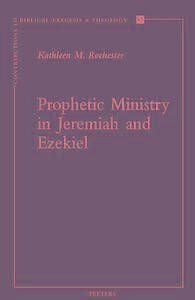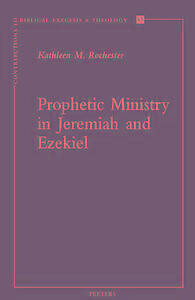
- Afhalen na 1 uur in een winkel met voorraad
- Gratis thuislevering in België vanaf € 30
- Ruim aanbod met 7 miljoen producten
- Afhalen na 1 uur in een winkel met voorraad
- Gratis thuislevering in België vanaf € 30
- Ruim aanbod met 7 miljoen producten
Zoeken
Omschrijving
This study makes a contribution to the understanding of Old Testament prophetic ministry by comparing selected texts from Jeremiah and Ezekiel relating to the call of each prophet, the images of assayer, potter and watchman, their relationships with the temple and their assessments of deviant prophets. The styles of communication of the two prophets are strikingly different. Interpretive clues regarding the reasons for these differences are found in the settings of each book. While Jeremiah and his people are still in the land with the temple present, Yahweh is perceived as close, and the communication between Yahweh, prophet and people is characterised by intimate dialogue. In Ezekiel's context, far from the temple and their land, Yahweh is presumed to be distant, and communication between Yahweh, Ezekiel and the people employs more visual content. Comparing two such significantly different prophets gives a range of fruitful insights into the relationship between prophetic ministry and local context.
Specificaties
Betrokkenen
- Auteur(s):
- Uitgeverij:
Inhoud
- Aantal bladzijden:
- 275
- Taal:
- Engels
- Reeks:
- Reeksnummer:
- nr. 65
Eigenschappen
- Productcode (EAN):
- 9789042926059
- Verschijningsdatum:
- 11/04/2012
- Uitvoering:
- Paperback
- Formaat:
- Trade paperback (VS)
- Afmetingen:
- 150 mm x 229 mm
- Gewicht:
- 417 g

Alleen bij Standaard Boekhandel
+ 92 punten op je klantenkaart van Standaard Boekhandel
Beoordelingen
We publiceren alleen reviews die voldoen aan de voorwaarden voor reviews. Bekijk onze voorwaarden voor reviews.











